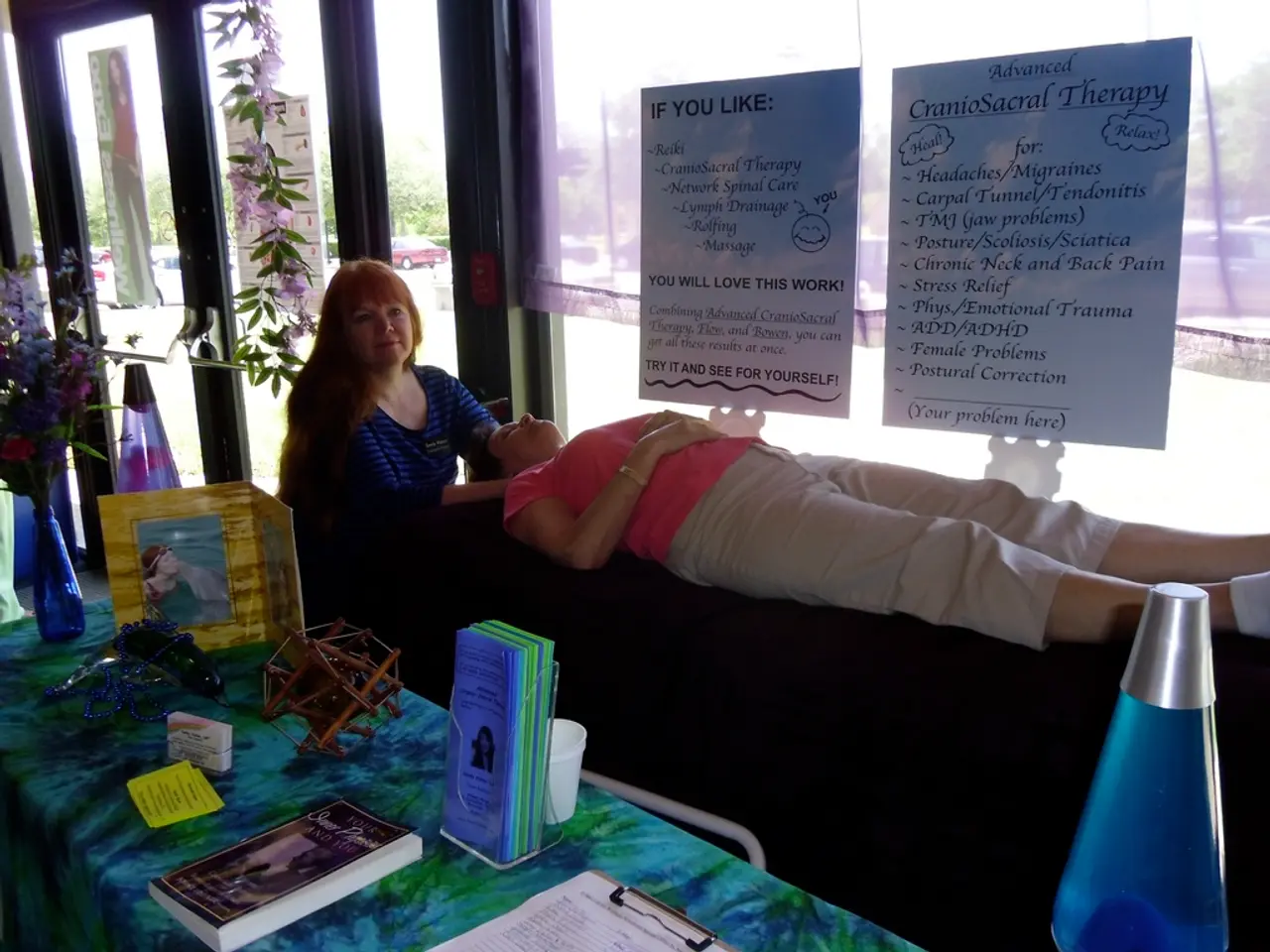Depression Treatment through Transcranial Magnetic Stimulation: Essential Information
Transcranial Magnetic Stimulation (TMS) is a non-invasive, drug-free treatment that has shown significant and sustained benefits for people suffering from depression and obsessive-compulsive disorder (OCD). This innovative procedure, which stimulates nerves in the brain with magnetic pulses, is typically administered over a period of 4-6 weeks, with maintenance therapy as needed.
For those battling depression, TMS works by targeting underactive areas of the brain, primarily the prefrontal cortex, which is responsible for memory, mood regulation, and conflict management. By stimulating these areas, TMS can lead to improved mood regulation and neural connectivity, resulting in long-term emotional stability, increased motivation, and a better quality of life. Clinical studies have reported remission rates as high as 50-79% in patients with treatment-resistant depression even one month post-treatment.
In the case of OCD, TMS has been explored as a neuromodulation technique targeting specific brain circuits implicated in OCD symptoms. While the data is more variable and still emerging compared to depression treatment, studies suggest that repetitive TMS (rTMS) can reduce compulsive behaviors and obsessive thoughts by modulating activity in the prefrontal cortex and connected pathways.
TMS is generally well-tolerated, with few side effects. Some people may experience side effects such as tension headaches, facial twitching during treatment, painful scalp during treatment, or temporary hearing problems after treatment. However, these side effects are usually mild and short-lived.
Before a person begins TMS treatment, they will need to undergo a simple procedure to measure their head for TMS coil placement. During a session, a healthcare professional places a magnetic coil against a person's scalp or forehead, delivering magnetic pulses that stimulate specific parts of the brain associated with emotional regulation. Before starting, the person will need to remove any belongings containing metal and put earplugs in to protect their ears from loud sounds.
It is important to note that TMS has been approved by the FDA for use in people with depression and OCD. People with treatment-resistant depression or those who cannot take depression medication are good candidates for TMS. However, those with a history of seizures, epilepsy, excessive alcohol consumption, history of severe head trauma, brain tumors, stroke, eating disorders, cocaine and ecstasy use, or certain implants in their head should avoid TMS, as seizures are a possible side effect.
In summary, TMS provides lasting symptom relief and functional improvement in depression and shows promising, though somewhat less established, positive effects in OCD, with ongoing research refining protocols and identifying patient populations most likely to benefit. As a safe, simple procedure with few side effects, TMS offers an alternative for those unresponsive or intolerant to medications.
- Treatment-seekers battling depression can find relief with Transcranial Magnetic Stimulation (TMS), a science-backed health-and-wellness treatment, as it stimulates underactive areas of the brain, leading to improved mood regulation and emotional stability.
- Mental-health professionals often recommend TMS as an alternative therapy-and-treatment for people with treatment-resistant depression, given its significant and sustained benefits, even one month post-treatment.
- For individuals dealing with Obsessive-Compulsive Disorder (OCD), TMS has shown promising results as a neuromodulation technique, reducing compulsive behaviors and obsessive thoughts, despite having less established evidence compared to depression treatment.




